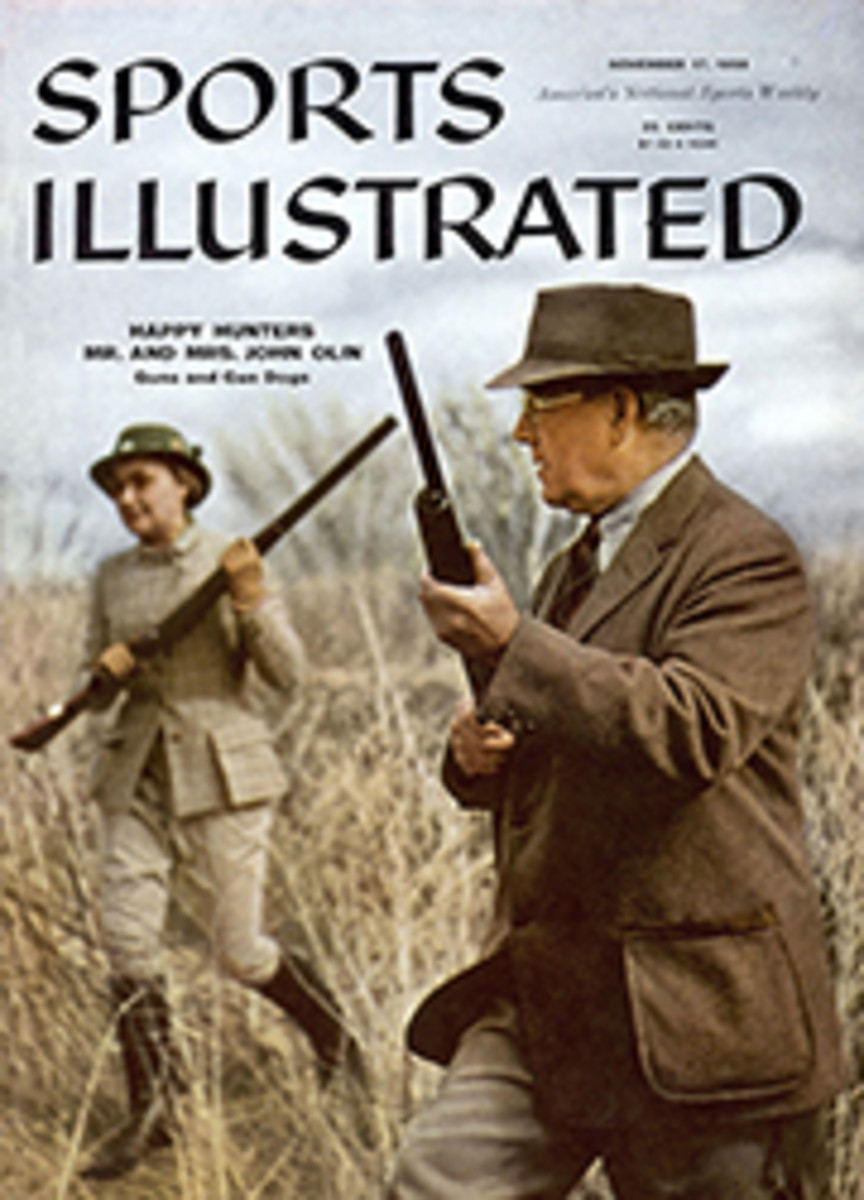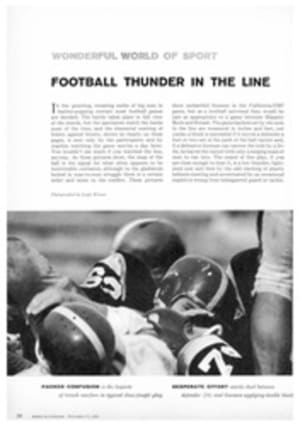
Fair game for Monsieur Louis
When John C. Borden of the textile family and his wife Judith were passing through Scotland two months ago at the height of the grouse-shooting season, they stopped at the famed Malmaison restaurant in Glasgow at my suggestion and ordered grouse for dinner. Sorry, explained the mamître d'hôtel in great chagrin, but the Queen Mother had just put on two very large dinner parties at which everyone was served grouse, and there were no more of the birds to be had. "If you want to eat Scottish grouse this week," he said, "you must go to '21' in New York."
For some years Jack and Charlie's "21" has had a standing order for 200 brace of grouse to be shipped from Inverness-shire, commencing on August 12, traditional start of the season in Scotland. And on succeeding days many regulars of "21" journey in from far places to the restaurant on New York City's West 52nd Street to begin their enjoyment of this delicacy, which has long been a sportsman's favorite. (One devoted client comes every year from Bermuda, arriving promptly on August 13.)
But Scottish grouse is only one of a large number of game specialties which have helped to establish the considerable reputation of "21." Chukar partridge, mallard and other species of duck, hazel hen, Mexican quail, young Canadian snow goose and Norwegian ptarmigan are other available items in season. Larger game includes venison, of course (the ragout of venison St. Hubert is outstanding), reindeer, moose, elk, hare from Canada and, occasionally, saddle of antelope. Also, of all things, bear. Gary Cooper, I was told, on his visits to New York never misses ordering the grilled black bear chops.
Old patrons are convinced that the chef at "21" can make anything taste good. Yves Louis Ploneis, shown opposite as he starts the preparation of baby pheasants bon viveur (see recipe below), is the commander of the 30 cooks and their 19 helpers who man the restaurant's several kitchens. This big, blond descendant of a line of Atlantic-sailing Bretons started at "21" in 1939 as one of the fish cooks; he can look back with untroubled brow on his own career story—calm seas and a prosperous voyage through shoals of mussels marini√®re; reefs of lobsters √† l'américaine, thermidor or en bellevue; oceans of trout or crisp fried whitebait; islands of "best" fishes—striped bass, salmon, pompano and red snapper; not to mention vast peninsulas of sole Dugléré.
Today Monsieur Louis is still a fish enthusiast and an ardent fisherman, with a boat which he keeps on Long Island. Though he no longer shoots (no guns in the house, he says, on account of four children—"Les quatres gosses! les fusils alors!") he adores game and—happily for "21"—is very fussy about the manner in which it should be prepared. On the subject of wines, Louis's face lights up with the kind of smile he reserves for only the prettiest feminine visitors to his kitchens. "Quels vins!" he exclaims. "More than 100,000 bottles sur place! Monsieur John Hay Whitney and Monsieur Winthrop Aldrich and many others, they buy wines they like, they keep them in their own bins here, they drink them here."
"What do you like to cook for yourself when you go home?" I asked Monsieur Louis. "Me?" he replied. "I do not cook; my wife she cook."
For those who do sometimes cook at home and who like to dine after the manner of "21," Louis has given me his instructions for preparing the succulent dish shown in the photograph at left.
PHOTO
LOUISE DAHL-WOLFE
BABY PHEASANTS BON VIVEUR (for four)
Squab chickens, small squabs or small rock Cornish game hens may be substituted for baby pheasants.
If using frozen birds, defrost in advance. Clean and dry four small birds, cutting off wingtips and tail pieces. Rub with cut lemon inside and out. Tie up each bird with a thin piece of fresh or salt pork fat, split to fit over the breastbone. Now coarsely chop a peeled carrot, a stalk of celery and an onion. Brown the trussed-up birds in a sauteuse (see photograph) or heavy pan that can be used both on top of the stove and in the oven, using four teaspoons of butter to start the browning. When browned, remove birds and brown the vegetables in the same pan, adding sprinkles of salt and pepper, a pinch of thyme and two bay leaves. Get the vegetable pieces very brown; do not be afraid of burning them.
Put the birds on top of the vegetables in the pan and place in a preheated 400° oven. Cook for half an hour. Take the pan out of the oven, cutting off the strings and removing the birds. Keep them warm in a covered serving dish or casserole (such as a deep enameled iron dish with lid) while making sauce. To do this, stir 2 tablespoons of flour into the vegetables and juices in the pan; cook gently for a few minutes; add 1½ cups of strong, heated consommé,½ cup red wine, 1 tablespoon brandy and either 1 teaspoon meat glaze or two bouillon cubes. Turn up the heat very high to boil the whole fiercely for five minutes; then strain directly over the birds in the serving dish. Place a slice of p√¢té de foie gras on each bird, if desired. Cover again and reheat, serving very hot.

